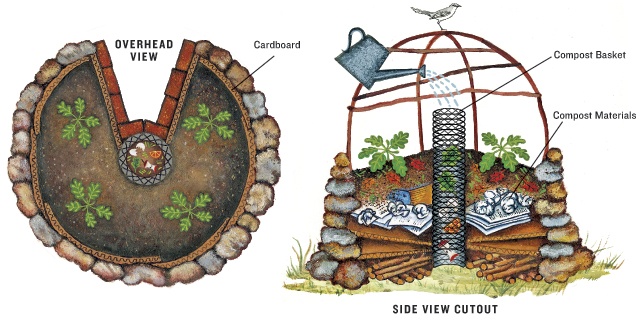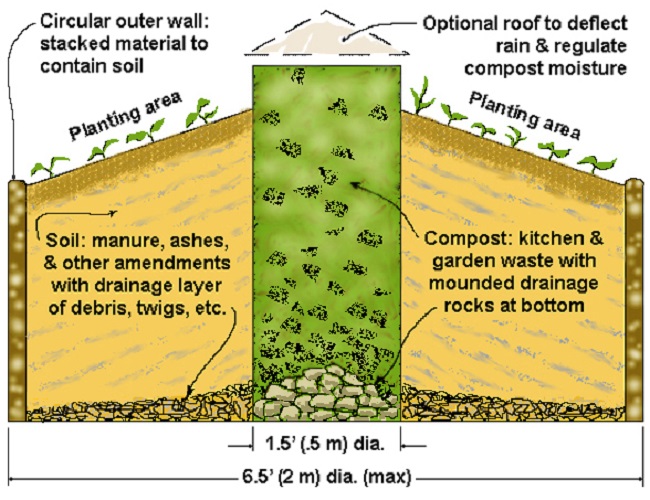Market Gardening
Learn from the experience of a seasoned farmer and you, too, will be able to grow a successful and fulfilling market gardening career on less acreage than you ever thought possible.
By Jean-Martin Fortier
December 2015/January 2016
Health, mind, and food
Learn from the experience of a seasoned farmer and you, too, will be able to grow a successful and fulfilling market gardening career on less acreage than you ever thought possible.
By Jean-Martin Fortier
December 2015/January 2016
Published on Mar 18, 2013
Having seen the very best, the worst, and the ugliest of the food industry, Laurent Adamowicz gives a poignant account of how our food system has dramatically changed over the last two decades. Could the obesity epidemic be directly linked to what our food has been eating?
Senior Fellow 2011 in the Advanced Leadership Initiative at Harvard University, Laurent Adamowicz is a former food industry executive and serial entrepreneur. He is the founder & CEO of Bon’App, a simple nutrition guidance mobile application that tells you what’s in your food.
In the spirit of ideas worth spreading, TEDx is a program of local, self-organized events that bring people together to share a TED-like experience. At a TEDx event, TEDTalks video and live speakers combine to spark deep discussion and connection in a small group. These local, self-organized events are branded TEDx, where x = independently organized TED event. The TED Conference provides general guidance for the TEDx program, but individual TEDx events are self-organized.* (*Subject to certain rules and regulations)
First made popular in Africa, keyhole gardens are catching on in Texas and other hot, dry places. Keyhole gardens hold moisture and nutrients due to an active compost pile placed in the center of a round bed. Although most helpful in hot and dry locations a keyhole garden will improve growing conditions in just about any climate.
From a bird’s eye view the garden is shaped as a keyhole. A notch is cut into a round garden bed, the notch makes for easy access to the center compost well. (Note the first diagram below; to see keyhole.)



The Gaia hypothesis, also known as Gaia theory or Gaia principle, proposes that all organisms and their inorganic surroundings on Earth are closely integrated to form a single and self-regulating complex system, maintaining the conditions for life on the planet.
The scientific investigation of the Gaia hypothesis focuses on observing how the biosphereand the evolution of life forms contribute to the stability of global temperature, ocean salinity, oxygen in the atmosphere and other factors of habitability in a preferredhomeostasis.
Since life started on Earth, the energy provided by the Sun has increased by 25% to 30%;[8]however, the surface temperature of the planet has remained within the levels of habitability, reaching quite regular low and high margins. Lovelock has also hypothesised that methanogens produced elevated levels of methane in the early atmosphere, giving a view similar to that found in petrochemical smog, similar in some respects to the atmosphere on Titan.
Processing of the greenhouse gas CO2 plays a critical role in the maintenance of the Earth temperature within the limits of habitability.
Currently this Gaian homeostatic balance is being pushed by the increase of human population and the impact of their activities to the environment. The multiplication ofgreenhouse gases may cause a turn of Gaia’s negative feedbacks into homeostatic positive feedback. This could bring an accelerated global warming and mass human mortality. Simulation which included rabbits, foxes and other species, led to a surprising finding that the larger the number of species, the greater the improving effects on the entire planet (i.e., the temperature regulation was improved). It also showed that the system was robust and stable even when perturbed.
Even as more Americans buythe products are increasingly removed from the traditional organic ideal: produce that is not only free of chemicals and pesticides but also grown locally on small farms in a way that protects the environment.
Everyone knows about how the advent of artificial fertilizers and pest controls altered the face of agriculture around the world during the Green Revolution more than half a century ago. And while few people are fully ignorant of the damage done to the environment through the use of these synthetic pesticides (and fertilizers), not many people have given much any thought to what will happen when we run out of these vital resources; which is nearing much faster than you might have guessed.
If you’ve ever used fertilizers you have probably at least seen their N-P-K ratings on the bag, standing for the three main fertilizers: nitrogen, phosphorus, and potassium. Nitrogen is quite plentiful and renewable, despite being the most damaging environmentally and largely being synthesized from natural gas, but the same is not true for phosphorus (bone meal) and potassium (potash). These vital minerals exist in quite limited quantities and cannot currently be feasibly synthesized, which causes major problems. The world’s phosphorus supply comes almost exclusively out of relatively unstable Morocco, and potassium from Canada and the former states of the Soviet Union, potentially making them future sites for “fertilizer wars” similar to the last century in the Middle East when supplies can’t easily keep up with demand.
Industrial agriculture could be hitting fundamental limits in its capacity to produce sufficient crops to feed an expanding global population according to new research published in Nature Communications.
The study argues that there have been abrupt declines or plateaus in the rate of production of major crops which undermine optimistic projections of constantly increasing crop yields. As much as “31% of total global rice, wheat and maize production” has experienced “yield plateaus or abrupt decreases in yield gain, including rice in eastern Asia and wheat in northwest Europe.”
The declines and plateaus in production have become prevalent despite increasing investment in agriculture, which could mean that maximum potential yields under the industrial model of agribusiness have already occurred. Crop yields in “major cereal-producing regions have not increased for long periods of time following an earlier period of steady linear increase.”
The paper makes for ominous reading. Production levels have already flattened out with “no case of a return to the previous rising yield trend” for key regions amounting to “33% of global rice and 27% of global wheat production.” The US researchers concluded that these yield plateaus could be explained by the inference that “average farm yields approach a biophysical yield ceiling for the crop in question, which is determined by its yield potential in the regions where the crop is produced.”
Think about these issues when you’re considering whether or not to go with small scale organic foods or extremely wasteful and disrupting industrial ones.
But even as more Americans buy foods with the organic label, the products are increasingly removed from the traditional organic ideal: produce that is not only free of chemicals and pesticides but also grown locally on small farms in a way that protects the environment.